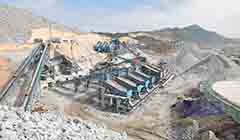 32;What is A Reunion Dinner. Reunion Dinner is the family reunion dinner held on the New Year’s Eve of Chinese New Year. It is the most important meal of the entire year, as all family members would get
32;What is A Reunion Dinner. Reunion Dinner is the family reunion dinner held on the New Year’s Eve of Chinese New Year. It is the most important meal of the entire year, as all family members would get
 سؤال
سؤال 32;Along the River During Ching Ming Festival by Zhang Zeduan. Cold Food Festival, three consecutive days starting the day before the Qingming Festival. All Saints' Day and All Souls' Day, two Christian observances commemorating the dead. Day of the Dead, a Mexican celebration similar to the Qingming Festival. Double Ninth Festival,
32;Along the River During Ching Ming Festival by Zhang Zeduan. Cold Food Festival, three consecutive days starting the day before the Qingming Festival. All Saints' Day and All Souls' Day, two Christian observances commemorating the dead. Day of the Dead, a Mexican celebration similar to the Qingming Festival. Double Ninth Festival,
 سؤال
سؤال
 سؤال
سؤال 243;r technik mających na celu zwiększenie liczby follow na koncie Instagramowym. Jak powszechnie wiadomo popularność na IG potrafi dać naprawdę wiele. Zatem warto zainteresować się tym, co
243;r technik mających na celu zwiększenie liczby follow na koncie Instagramowym. Jak powszechnie wiadomo popularność na IG potrafi dać naprawdę wiele. Zatem warto zainteresować się tym, co
 سؤال
سؤال
Jingchu Suishiji Explained The Jingchu Suishiji , also known by various English translations, is a description of holidays in central China during the 6th and 7th centuries. It was compiled by Du Gongzhan in the Sui or early Tang (early 7th century) as a revised, annotated edition of Zong Lin's mid-6th-century or Jingchuji .
 سؤال
سؤال
Nianhua produced from Taohuawu, literally translated as peach blossom embankment, was inscribed as a Chinese national intangible cultural heritage in 2006, lauded for its intricate design, meticulous carving and woodblock-printing techniques. The artisans of Taohuawu use the “one block, one color” technique, meaning they carve one woodblock
 سؤال
سؤال
The Jingchu Suishiji, also known by various English translations, is a description of holidays in central China during the 6th and 7th centuries. It was compiled by Du Gongzhan in the
 سؤال
سؤال ::Mechanical lithotripsy
::Mechanical lithotripsyThe Jingchu Suishiji, also known by various English translations, is a description of holidays in central China during the 6th and 7th centuries. It was compiled by Du Gongzhan in the
 سؤال
سؤال
The Jingchu Suishiji, also known by various English translations, is a description of holidays in central China during the 6th and 7th centuries.It was compiled by Du Gongzhan in the Sui or early Tang (early 7th century) as a revised, annotated edition of Zong Lin's mid-6th-century or Jingchuji..
 سؤال
سؤال 32;What is A Reunion Dinner. Reunion Dinner is the family reunion dinner held on the New Year’s Eve of Chinese New Year. It is the most important meal of the entire year, as all family members would get together back in their hometown to celebrate no matter where they work or live. Chinese New Year abides by the lunar calendar: it
32;What is A Reunion Dinner. Reunion Dinner is the family reunion dinner held on the New Year’s Eve of Chinese New Year. It is the most important meal of the entire year, as all family members would get together back in their hometown to celebrate no matter where they work or live. Chinese New Year abides by the lunar calendar: it
 سؤال
سؤال
Jingchu Suishiji Historical description of holidays in China Upload media Wikipedia Instance of literary work Genre annual event Author Zong Lin Language of work or name Chinese Authority file Q17399695 Reasonator
 سؤال
سؤال 32;Jing-Chu suishi ji "Festivals and seasonal customs of the Jing-Chu region" is a description of habits, customs and festivities through the year in the southern region of Jing or Chu (modern Hubei and Hunan). It was written by Zong Lin (502-565), courtesy name Yuanlin , during the Liang period (502-557).
32;Jing-Chu suishi ji "Festivals and seasonal customs of the Jing-Chu region" is a description of habits, customs and festivities through the year in the southern region of Jing or Chu (modern Hubei and Hunan). It was written by Zong Lin (502-565), courtesy name Yuanlin , during the Liang period (502-557).
 سؤال
سؤال

آلة تكسير الحصى بقدرة 45-1200 طن/ساعة بسعر مناسب، يرجى الاتصال بنا إذا لزم الأمر.
احصل على عرض أسعار